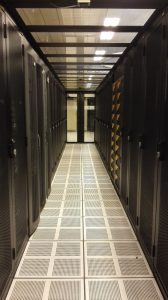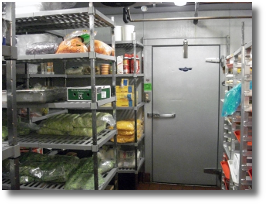
Knowledge Base / News
Much of the Eastern United States is currently undergoing a stretch of extremely hot weather. CNN reports that a current high pressure system called a “heat dome” is leading to excessive heat warnings in 12 states. High temperatures can not only cause serious health problems, it can also cause major problems in data centers, restaurants, greenhouses, and more.
In weather patterns such as the ones we’re seeing right now in the US, it becomes even more important to monitor your facility’s environment to protect against the multitude of problems that can occur.
 It’s no secret that high heat can wreak havoc in a data center or server environment. Server fans and cooling units need to work overtime to keep equipment temperatures down. Once server fans start to fail mechanically, the servers themselves will begin to fail, and lost data and ruined hardware will soon follow.
It’s no secret that high heat can wreak havoc in a data center or server environment. Server fans and cooling units need to work overtime to keep equipment temperatures down. Once server fans start to fail mechanically, the servers themselves will begin to fail, and lost data and ruined hardware will soon follow.
Cooling units will need to work much harder to maintain optimal temperatures in server rooms and data centers in this kind of heat. This type of over-use can often lead to condensation building up quickly; any type of moisture inside of an IT environment will introduce different problems.
Higher humidity as a result can lead to electrical shorts; puddled up condensation on a data center’s tiled floor can lead to potential slip and fall situations or even electrical shorts under a raised floor.
Some smaller businesses only maintain a network closet without it’s own dedicated cooling system. Higher overall temperatures can cause equipment failure quickly in situations like this. It’s very important that network closets or computer rooms without their own dedicated cooling have their temperatures monitored extremely closely.
The drain on main power grids to keep up with all the additional cooling often leads to power loss in these types of weather patterns. Although most facilities maintain their own backup generators, some smaller businesses try and get by with just UPS units for backup. While those may work in a quick power failure, a prolonged outage will mean downtime and the real possibility of hard drive damage.
Remote environment monitoring is key when high temperatures settle in for a longer period of time. Those high temperatures mean your data center has a much smaller window before they reach damaging levels if cooling fails.
Temperature, humidity, flood, and power should be logged and monitored to not only alert you if high thresholds are reached, but also to allow you to track changing trends over time to warn you of a potential issue. Cloud based temperature monitoring can help you keep an eye on all of your assets, and warn you instantly no matter where you are of any problems.
 High heat patterns for an extended period of time can greatly affect restaurants and cold storage facilities as well. Coolers and freezers need to work overtime to help keep temperatures out of the danger zone. Refrigerated foods must be kept at 41° F or lower, while frozen foods should be held at 0° F or lower.
High heat patterns for an extended period of time can greatly affect restaurants and cold storage facilities as well. Coolers and freezers need to work overtime to help keep temperatures out of the danger zone. Refrigerated foods must be kept at 41° F or lower, while frozen foods should be held at 0° F or lower.
If a walk in cooler or freezer cannot maintain that temperature during a heat wave, restaurants run the risk of both discarding spoiled food as well as potentially serving customers hazardous meals. Health inspection fines, lost stock, and damages from sick patrons are all real possibilities with even only a few degrees difference.
Monitoring the temperature of all food storage units can help ensure all food is stored properly, and any early warning signs of cooling problems can be addressed immediately.
As temperatures soar, please be sure to protect your employees, your facilities, and your customers. Keep an eye on cooling systems to be warned of any upcoming potential failures. Monitor and log your data centers, coolers, or freezers to make sure they’re all staying within acceptable temperature and humidity levels.
Most importantly, make sure employees stay hydrated and cool, and know the warning signs of heat-related illness. Knowing the temperature ranges your facilities need to stay within, and getting warning signs when they’re about to exceed them, will help you avoid costly downtime and spoilage.

You may find Windows Command Prompt at the following path:
To run Windows Command Prompt as an administrator:
| Current S models | Current E models |
|---|---|
| Room Alert 32S | Room Alert 32E |
| Room Alert 12S | Room Alert 12E |
| Room Alert 3S | Room Alert 4E |
| Room Alert 3E | |
| S models | E & W models |
|---|---|
| Room Alert 32S | Room Alert 32E |
| Room Alert 12S | Room Alert 12E |
| Room Alert 3S | Room Alert 4E |
| Room Alert 3E | |
| Room Alert 3W |
| Model |
|---|
| Room Alert MAX |
| Room Alert 32S |
| Room Alert 12S |
| Room Alert 3S |
| Room Alert 32E/W |
| Room Alert 12E |
| Room Alert 4E |
| Room Alert 3E |
| Room Alert 3 Wi-Fi |